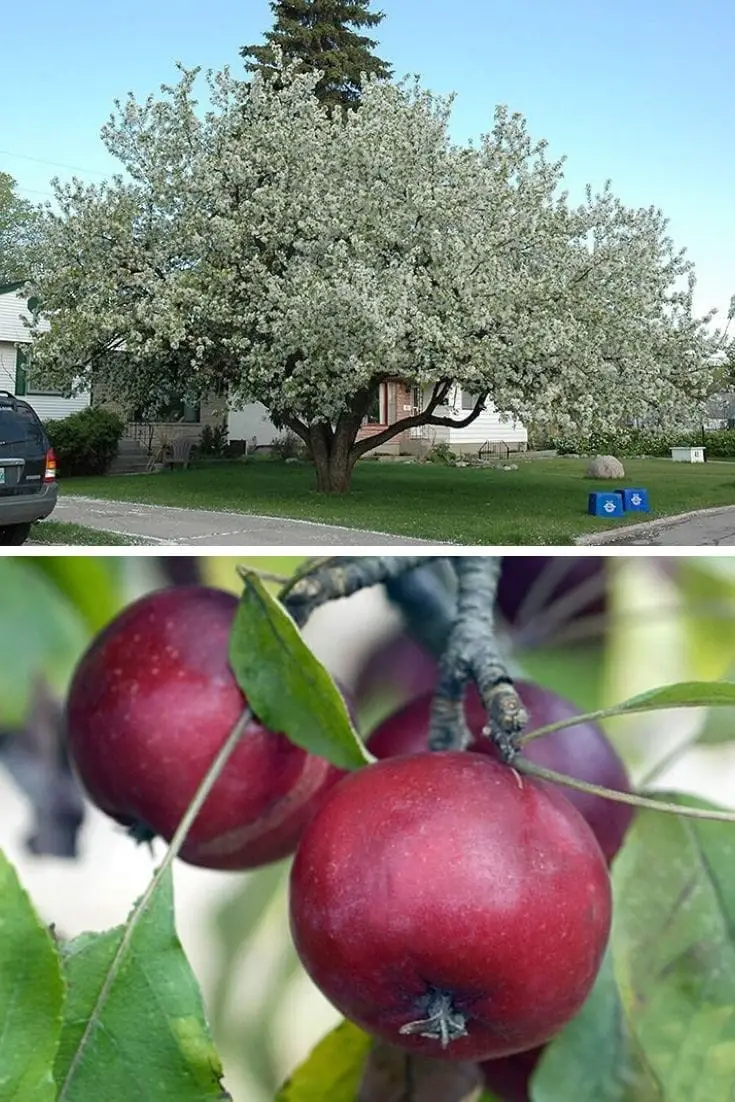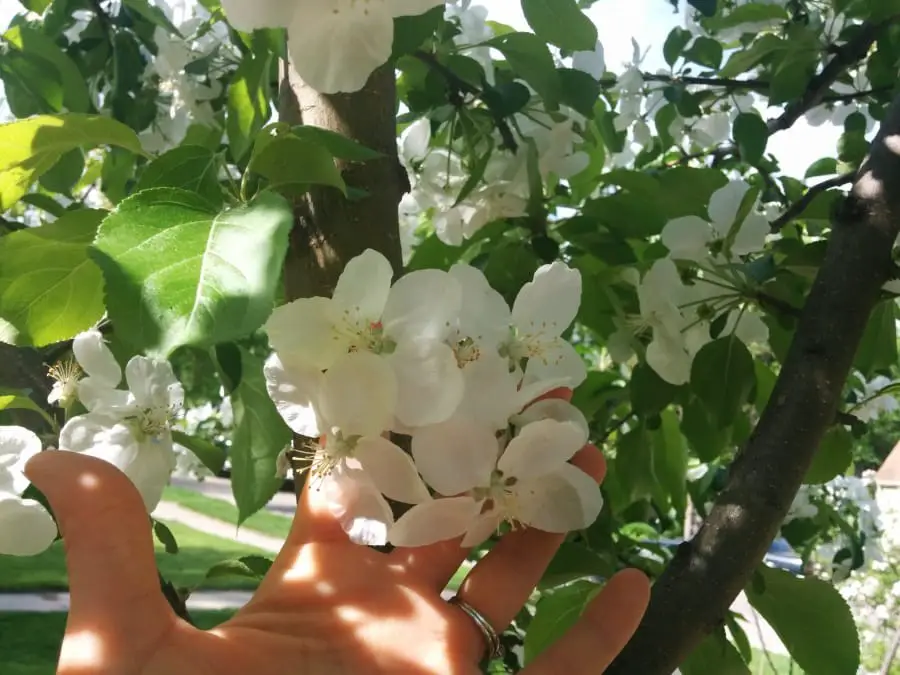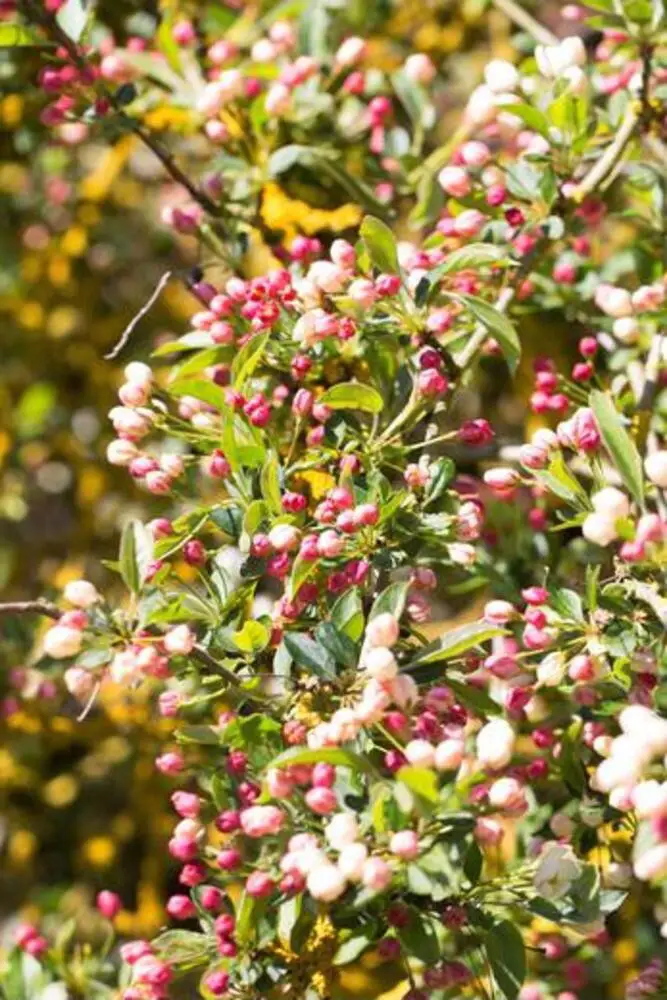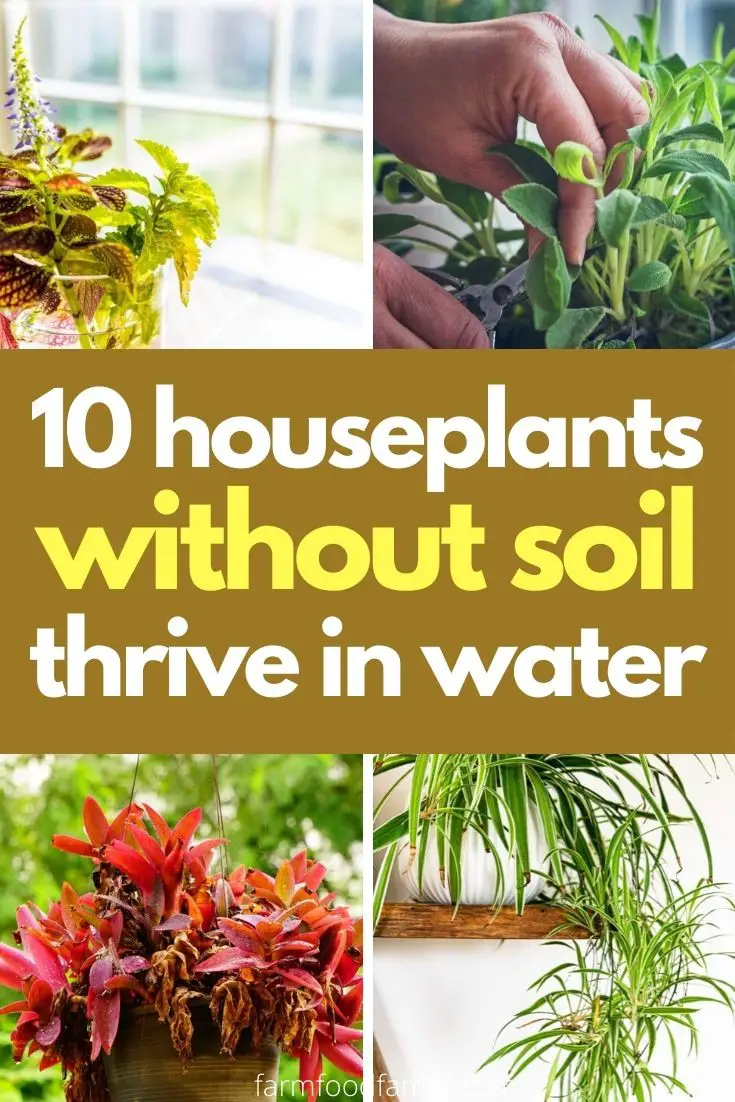A Comprehensive Guide To All Things Crabapple Trees
Crabapples are not just any ordinary apple trees, producing luscious fruits that will keep the doctor away if consumed daily. Instead, these small, decorative trees are renowned for their vibrant pink to red flowers during spring. For bonsai enthusiasts or those looking to adorn their yard with fruit-bearing plants, crabapples can be an excellent starting point.
In this article, we’ll delve into the world of crabapples, exploring how to grow and maintain them, their significant benefits, as well as describing each variety. If you’re intrigued, it’s time to read on. Crabapple trees are multi-faceted, serving purposes beyond producing fruits. They provide vital pollination services, contain pectin and malic acid, and can be used for grafting. Identifying a crabapple tree is relatively straightforward, focusing on its leaves, flowers, fruit, and height.
There are numerous varieties of crabapples to explore, each with unique characteristics.
Some popular types include Sargent crabapple, Prairifire crabapple, Royal Raindrops crabapple, Dolgo crabapple, Lollipop crabapple, Camelot crabapple, Sugar Tyme crabapple, White Angel Crabapple, Coralburst crabapple, Snowdrift crabapple, Profusion crabapple, Red Jewel crabapple, Prince Georges crabapple, Golden Hornet crabapple, Robinson crabapple, Adirondack crabapple, Charlotte crabapple, Chestnut crabapple, Tina crabapple, Brandywine crabapple, Firebird crabapple, and Red Sentinel crabapple.
Crabapples can grow up to a certain height and bloom at specific times. When it comes to planting and maintaining these trees, factors such as soil mix, watering, and fertilizing must be considered. Pruning is also crucial for the tree’s overall health and appearance. The lifespan of crabapple trees varies depending on factors like their variety and growing conditions. Some diseases that can affect these trees include Botryosphaeria canker, Apple scab, and Frogeye leaf spot.
As for edibility, some crabapples are suitable for consumption, while others may be used in various ways such as creating natural shade, pectin, juice, liqueur, wine, or sauce.
What is crabapple?
Let’s begin by clarifying what crabapples are, which is often referred to as simply ‘crab’ or Malus. While it’s not entirely inaccurate to refer to them as such, there’s more to the story. In reality, crabapples belong to the genus Malus, but they’re also part of the Rosaceae family, which includes roses. Native to Asia and North America, these versatile trees offer a unique combination of growth habits that make them appealing for fruit and flower displays.
One notable characteristic is their smaller, slightly bitter fruits, which are used in apple cider and preserves, making them a valuable addition to any culinary endeavor.
What does crabapple look like?

Crabapples, smaller in stature compared to traditional apple trees, exhibit distinct characteristics that set them apart. Their compact size belies the presence of more pronounced spines and sturdier stems and branches. This unique combination makes them a striking addition to any landscape. As a decorative tree, crabapples are prized for their stunning foliage, featuring delicate five-petaled flowers in shades of white, pink, and purple.
Some varieties even boast semi-double or double petals, adding an extra layer of visual appeal. Despite being winter-hardy, the fruit produced by these trees is diminutive, measuring less than 2 inches in diameter. In essence, crabapples are a compact yet vibrant addition to any environment.
What are crabapple trees good for?
Crabapples often get a bad rap as being inedible or purely ornamental. However, it’s essential to recognize that crabapples and common apples share a common ancestor – the genus Malus. This familial connection has significant implications for their characteristics and uses. So, what are crabapple trees actually good for?
Pollination
When cultivating a self-sufficient orchard, incorporating crabapples alongside traditional apples is a worthwhile consideration. One of the key advantages of including crabapples is their tart flavor profile, which makes them a prime attraction for honey bees. By facilitating cross-pollination within your orchard, crabapples can play a significant role in promoting healthy growth and fruit development among your fruit-bearing trees, including those producing common apples.
In essence, the addition of crabapples to your orchard can have a positive impact on the overall productivity and quality of your harvest.
Pectin and malic acid
When you combine the tartness of crabapples with the slightly bitter taste of apple cider, you’ll experience a more robust flavor profile. This unique combination isn’t limited to just cider – it also pairs well with jellies and preserves. The nutritional benefits of incorporating crabapples into your recipes are equally impressive.
Apple family members, including crabapples, boast high levels of pectin, a type of fiber that has been linked to stabilizing blood sugar, preventing colon cancer, and lowering bad cholesterol. Additionally, the malic acid content found in apples has been shown to have therapeutic properties, helping to alleviate symptoms of gout, constipation, indigestion, and inflammation.
Grafting
While common apples may get all the glory, crabapples possess a unique set of characteristics that make them incredibly resilient and robust. Not only do they boast an impressive ability to resist disease, but they’re also surprisingly adaptable when it comes to harsh environmental conditions. In fact, their rugged nature has earned them a reputation as a reliable rootstock for grafting other apple varieties, capitalizing on their commendable qualities.
How to identify a crabapple tree
Crabapples can be easily recognized by those familiar with their distinctive features. While size is a notable difference from regular apples – crabapples being smaller – it’s just the beginning of what sets them apart. Their sprawling root system and robust spread are also notable characteristics. But perhaps most telling are the flowers that bloom on these trees, often preceding the fruit they’ll eventually bear.
And yet, there’s still more to identify a crabapple tree beyond these basic traits.
Leaves
Crabapple trees showcase a dynamic display of color change throughout the year, with a unique leaf morphology to match. During spring, the leaves emerge as light green, gradually darkening to a deep green in summer. As autumn arrives, they transform into vibrant shades of yellow-orange or purple. The edges of these leaves are serrated, featuring an alternate growth pattern instead of opposite growth, where each leaf grows on either side of a stem.
Morphologically, the oval-shaped leaves have a pointed tip and tend to form clusters. Notably, young leaves sport hairy undersides, while mature leaves lose their hairiness.
Flowers
Between April and May, these plants burst forth with vibrant blooms. A unique characteristic of this species is its ability to produce flowers in clusters, each featuring a varying number of petals – ranging from five semi-double petals to fully double varieties. Furthermore, the colors of these blossoms can range from pure whites and soft pinks to rich purples, depending on the specific variety.
Fruit
One characteristic that distinguishes crabapples from other types of apples is their consistent fruit size. While there may be slight variations, all crabapples typically measure two inches in diameter. In fact, if an apple exceeds this size, it’s unlikely to be a true crabapple.
Height
Crabapple trees, classified as medium-sized, exhibit a growth pattern that is limited to a maximum height range of 15-30 feet. This relatively modest stature allows them to thrive in a variety of environments and make them an attractive option for landscaping purposes.
Types of crabapple tree with pictures

With over 700 known variants and 35 distinct species of crabapples, narrowing down the perfect variety can be a daunting task. To make your decision-making process easier, this post delves into more than twenty of these fascinating options. By the time you’ve finished reading, you’ll be well-equipped to choose the ideal crabapple for your garden, saving you the uncertainty that often accompanies this crucial selection.
Sargent crabapple (Malus sargentii)

This dwarf variety of foliage boasts an impressive spread, reaching only 8-10 feet in height. Its unique silhouette takes on an irregularly-round shape, adding to its charm. The plant’s small, fragrant flowers undergo a delightful transformation throughout the spring season, beginning with vibrant red hues early on, transitioning to pink buds mid-season, and finishing with pure white blooms by spring’s end.
Prairifire crabapple (Malus x ‘Prairifire’)

The ‘Fire’ plant is aptly named due to its vibrant blooms that burst forth in shades of bold purple and red from mid-spring through late spring. As the seasons progress, it will yield small red-violet fruits, though unfortunately they are too bitter to be enjoyed. The foliage on this striking plant is a kaleidoscope of colors, with leaves transitioning from deep purple in the spring to dark green with prominent red veins during the summer, and finally settling into fiery orange hues come autumn.
Royal raindrops crabapple (Malus ‘Royal Raindrops’)
The Royal Raindrop crabapple variety boasts a unique combination of characteristics that make it stand out from other types. During spring, it produces bold, vibrant red-pink blooms that are sure to draw attention. As the seasons change, the small, reddish-purple fruits become a vital food source for birds during the winter months. But what really sets Royal Raindrop apart is its remarkable foliage.
In the summer, the dark green leaves provide a lush backdrop, only to transform into a stunning copper red hue come fall.
Dolgo crabapple (Malus x ‘Dolgo’)

The Dolgo is a beloved option, boasting an earlier bloom time than its counterparts. Its sprawling foliage takes center stage, setting the stage for a showstopping display of white, fragrant blooms. The intoxicating aroma wafts through the air, leaving a lasting impression. This hardy variety can reach staggering heights of up to 30 feet, and is distinguished by its vibrant red fruits – perfectly ripe for snacking raw.
Moreover, it possesses an impressive ability to weather the winter months unscathed.
Lollipop crabapple (Malus ‘Lollipop’)
The Dwarf Mondo Grass boasts a refined charm when cultivated in picturesque gardens. Its delicate, snow-white flowers unfurl during the spring season, while its foliage assumes a soft, buttery hue come autumn. Notably, this ornamental grass retains its circular silhouette even after pruning, earning it its distinctive moniker.
Camelot crabapple (Malus ‘Camzam’ Camelot)
The Camzam, also known as the dwarf white-flowered crabapple, is a compact tree that reaches a height of around 10 feet. Its unique characteristic is its ability to resist diseases, producing vibrant red fruit as it bears. The tree’s growth begins with red buds that eventually transform into stunning white flowers in the summer, often displaying subtle hints of pink and burgundy hues.
Sugar Tyme crabapple (Malus ‘Sutyzam’ Sugar Tyme)

This shrub boasts remarkable disease resistance, showcasing vibrant dark green leaves that harmonize perfectly with its showy displays of pink-tinged buds. As the buds mature, they give rise to clusters of crisp white flowers and a bounty of rich red fruit that will remain present throughout the year, adding depth and visual interest to any landscape.
White Angel Crabapple (Malus ‘Inglis’ White Angel)
This crabapple variety boasts a dainty vase shape, with an intricate display of beauty as it transitions from pink buds to clusters of fragrant, snow-white blooms during spring’s awakening. The delicate petals unfurl in harmonious clusters, painting the landscape with soft brushstrokes of purity. As winter approaches, the tree yields small, luscious fruits that will provide sustenance for the season’s critters, making it an ideal choice for those looking to create a haven for wildlife.
Coralburst crabapple (Malus ‘Coralburst’)
This particular rose variety stands out due to its symmetrical, rounded flower heads. As spring awakens, it greets us with coral-pink buds that eventually unfurl into semi-double, bold pink petals. A bonus feature of this rose is the bronze-colored fruits that follow in the mid-spring season. Additionally, its disease-resistant nature makes it a low-maintenance and worry-free addition to any garden.
Snowdrift crabapple (Malus ‘Snowdrift’)
The Malus sieversii, also known as the Sievers’ Apple, earns its name from its stunning white blossoms that form dense clusters. These flowers bloom in mid to late spring, filling the air with a light, delicate fragrance. This ornamental tree’s beauty doesn’t stop there – it will also produce red-orange crabapples later in the season. While these apples may look tempting, they should not be consumed, as they are not intended for human consumption.
Profusion crabapple (Malus x moerlandsii ‘Profusion’)

The Profusion Loropetalum is a fan favorite, boasting a medium texture and sprawling growth habit. Its name originates from the vibrant purple-red foliage that emerges in the spring, gradually transitioning to bronze-green hues during the summer months. The plant’s striking dark red-purple flowers are characterized by their distinctive white centers. Moreover, it has the added benefit of being disease-resistant.
Red jewel crabapple (Malus Jewelcole’ or Malus ‘Red Jewel’)
Despite its name, the ‘red jewel’ isn’t solely defined by its white, small, and fragrant flowers that bloom in early April. Instead, it’s the tree’s striking red berries that truly set it apart – particularly as they mature into a distinctive pyramid shape, often persisting well into winter.
Prince Georges crabapple (Malus ioensis ‘Prince Georges’)
The source plant boasts a distinctive rounded shape that gradually transforms from a rich, deep-rose pink hue to delicate, pale pink double-petaled blooms. As the seasons transition into late spring, an additional 60 petals will emerge, further adding to the plant’s already impressive floral display.
Golden Hornet crabapple (Malus x zumi ‘Golden Hornet’)
The ornamental qualities of this plant are reminiscent of the red sentinel, as its pink buds transform into stunning white blooms come late spring. However, a key distinction lies in the type of fruit it produces, with oval-shaped, golden yellow fruits replacing the characteristic red, glossy cherries.
Robinson crabapple (Malus ‘Robinson’)
This particular plant boasts striking features, showcasing pink blooms that can grow up to 15 inches in diameter. Initially, the leaves are a deep purple hue, gradually transitioning to bronze-green during the summer months and eventually taking on vibrant red-orange tones come fall. As the seasons change, the plant will also produce fruits that ripen in the autumn. One of its most notable attributes is its ability to yield a bountiful harvest perfect for crafting delicious homemade jellies.
Adirondack crabapple (Malus ‘Adirondack’)

Consider this stunning variant for its potential to be truly award-winning when used as a decorative element in smaller garden spaces. Its compact growth habit reaches just 12ft tall, allowing it to thrive in tight quarters without overwhelming the senses. In the spring, its large white blossoms burst forth, filling the air with sweet fragrance and visual beauty.
As autumn arrives, this same plant yields small, glossy red fruits that may be bitter to humans but will delight backyard birds, providing a tasty treat for these feathered friends.
Charlotte crabapple (Malus coronaria ‘Charlotte’)
The Ballerina tree, known for its remarkable resistance to shoots, can thrive in smaller gardens without the need for frequent pruning. Its fruit is characterized by a unique combination of rounded shapes and flat bases, often featuring vibrant red hues. Due to its compact nature, it’s an ideal choice for homeowners with limited outdoor space.
Chestnut crabapple (Malus ‘Chestnut’)

The most impressive aspect of this type of crabapple is its exceptionally large fruit, which upon tasting yields subtle notes reminiscent of pear, honey, and vanilla. Moreover, the trees are also valued for their use in producing wine and cider. As May arrives, these trees are adorned with striking white blooms that draw attention to their beauty.
Tina crabapple (Malus sargentii ‘Tina’)

The Sargent crabapple cultivar, distinguished by its diminutive foliage, presents an intriguing appearance. The tree’s floral display resembles a striped candy cane, featuring striking combinations of white and pink hues. While it may take its time to mature, this variety exhibits a notable trait – the production of copious red-orange berries, a testament to its unique characteristics.
Brandywine crabapple (Malus ‘Branzam’ Brandywine)

This iconic crabapple variety has been a top choice among gardeners for its exceptional features. Its vibrant foliage is characterized by bright pink, double-petaled flowers that create a stunning display. The tree’s rounded shape stands tall between 10-20 feet, providing year-round interest with dark green leaves in the summer and striking red-orange hues in the fall.
As the fruits ripen to a yellow-green color, harvest them for use in jams and jellies, perfect for savoring during winter months.
Firebird crabapple (Malus Sargentii ‘Firebird’)

The firebird, a stunning perennial, earns its name from the vibrant colors it displays during springtime. What sets it apart is its remarkable ability to retain these bold hues even through the winter months. As a member of the sargent family, this plant boasts impressive disease resistance. Its versatility makes it an ideal choice for container cultivation.
Red Sentinel crabapple (Malus x robusta ‘Red Sentinel’)
The majestic plant begins its life cycle with dark pink buds that eventually unfurl into delicate, solitary blooms in the latter part of spring. This flowering phenomenon is aptly named due to the striking resemblance between its cherry-like, deep red fruits and a cherry. A fascinating aspect of this plant is that when these fruits are left unpicked, they transform from firm to mushy, offering an intriguing glimpse into the natural world’s intricate processes.
How far do crabapple trees grow?
While crabapple trees are known for their compact growth habit and reduced maintenance needs, their spread is still an important consideration. In fact, the tree’s size directly correlates with its spread, meaning a 10-foot tall crabapple will also have a 10-foot wide canopy. This is why it’s not recommended to plant multiple crabapples too close together, as they require sufficient space for their foliage to unfold and receive adequate air circulation.
Their root system mirrors this same pattern, stretching out just as far as the tree’s branches. As such, a safe distance between crabapple trees should be at least 15-25 feet apart, with enough clearance from nearby hardscapes and underground infrastructure to prevent any potential damage or interference.
When do crabapple trees bloom?

While timing can vary depending on the specific crabapple variety and weather conditions, these trees typically bloom for around two weeks. The peak blooming period usually occurs in April or May, although some varieties may start to flower as early as late March, while others may not reach their full bloom until mid-May.
Interestingly, even when crabapples are still on the bud stage or pre-bloom, they can already add a striking visual element to your landscape, making them an attractive and productive addition to any yard.
How to plant a crabapple tree
While the overall process of planting and growing crabapple trees follows a familiar pattern, the timing of planting depends on the specific variety. For instance, bare-root crabapples require an early spring planting window, whereas container-grown, burlapped, and balled varieties can be planted during spring, summer, or fall. When it comes to the actual process of planting, here’s what you need to know:
Plant depth
When it comes to planting crabapples, the first crucial step is finding the ideal location. As mentioned earlier, these small trees have a tendency to spread and develop deep roots, requiring ample space between each other (at least 8-25 feet) as well as a safe distance from hardscapes and underground features. To thrive, crabapples need six hours of uninterrupted sunlight per day. Additionally, the planting process begins with digging a hole that’s approximately four feet in diameter.
It’s essential to provide some extra space around this hole, with a minimum radius of eight feet. If you’re working with a container-grown variety, make sure to plant the tree at the same depth as it was previously rooted in its container.
Soil mix
To complete the planting process, combine the excavated soil with peat moss and compost in a harmonious blend. Then, carefully place the tree or seedling into its new home and begin filling the hole with the enriched mixture. As you go, make sure to gently firm the soil around the roots with your feet, ensuring an even base. Next, thoroughly water the site, allowing it to drain completely before adding more soil if necessary to prevent compression.
Repeat this process until the soil settles into its new form.
Watering
When it comes to watering a newly planted crabapple tree, one inch of water per week is the ideal amount for the first year. This initial period allows the tree to establish itself in its new environment. After settling into its plant hole, the frequency of watering can be reduced unless extreme drought conditions prevail. It’s essential to provide adequate hydration during this time to support the tree’s ability to flower and produce fruit.
Fertilizer
When cultivated in well-nourished soil with optimal conditions, crabapples typically thrive without requiring additional fertilization. However, if you notice stunted growth or pale foliage, a targeted fertilizer application may be necessary to support their natural resilience. To promote healthy blooms and fruit production, consider adding a 2-5 inch layer of organic mulch every summer.
How to prune a crabapple tree
Crabapples don’t require regular pruning, unlike other fruit trees. Instead, they simply need to be maintained by removing dead leaves, branches, and water sprouts on an annual basis. This helps prevent disease entry points from forming. However, if you notice fungal disease taking hold, pruning becomes a crucial step in improving air circulation around the tree. It’s essential to note that pruning after June can negatively impact the following year’s bloom, so timing is everything.
How long do crabapple trees live?
Crabapple trees are remarkable for their longevity, being deciduous and capable of living for up to thirty to forty years on average. However, a subtle yet noticeable decline in annual flowering and fruit-bearing is likely to occur around the fifteen-year mark. What’s more fascinating is that some crabapple variants have been known to defy the odds, thriving for an astonishing seventy years.
How to prevent crabapple shoots?
Crabapples, despite their natural resistance to many diseases, can be vulnerable to a peculiar issue – shoots emerging directly from the rootstock. These unwanted growths can divert energy away from the main tree, ultimately harming its overall health. One of the primary reasons for this phenomenon is soil moisture and irrigation. To mitigate this problem, it’s essential to inspect the soil near the base of the tree using a trowel.
If the top four inches of soil are dry, a thorough watering of up to 12 inches may be necessary. However, to prevent shoots from forming altogether, apply a four-inch deep layer of organic mulch at least three inches away from the trunk. Although some minimal growth may still occur, it’s crucial to remove these shoots as soon as they appear.
Chemical controls like herbicides are not viable options, as the chemicals would contaminate the main plant since the shoots are connected to its root system.
How big does a crabapple tree get?

Crabapple trees, on average, can grow quite tall, with dwarf varieties reaching heights between 15 and 30 feet. However, it’s common for most medium-sized crabapple trees to reach a maximum height of around 30 feet, which is more than sufficient for these types of trees.
Crabapple diseases
While other apple varieties may struggle with disease resistance, crabapples stand out for their natural immunity to many common afflictions. However, it’s essential to note that they’re not completely impervious to illness. Interestingly, there are a mere three notable crabapple diseases, providing reassurance for gardeners and enthusiasts alike.
Botryosphaeria canker
Canker can manifest on a tree by causing its leaves to wilt or die off gradually. As this process unfolds, you’ll notice that the affected leaves develop pimple-like structures that are typically dark brown or black in color, accompanied by dark brown wood beneath the bark. To address this issue, it’s essential to prune any infected branches and ensure the tree receives adequate irrigation.
Apple scab
Fruit-bearing trees often share a common enemy: apple scab. This fungal disease is identified by the formation of green, velvety growths on leaves during springtime. As the infection progresses, affected fruits develop rough, irregular patches on their surface. The subsequent premature fall of infected leaves can leave trees looking bare and sparse. To combat this issue, it’s essential to apply a fungicide as soon as flower buds begin to color.
A three-week treatment period is typically sufficient to effectively stop the spread of apple scab.
Frogeye leaf spot
As the leaves unfurl, distinctive purple leaf spots emerge along the margins. As these old spots mature, they take on a characteristic gray hue, following a specific pattern. However, this is just the beginning of the issue. The affected leaves will soon turn yellow and drop prematurely from the tree. To address the problem, pruning the dead foliage and twigs is essential.
Nevertheless, it’s crucial to dispose of these removed materials away from the tree to prevent any potential harm or spread of disease.
Are crabapples edible?
While a straightforward answer to whether you can eat crab apples is a resounding yes, there’s more to consider than just the taste. Raw crabapple fruits are known for their tartness and bitterness, making them less appealing on their own. However, when used in various culinary applications like jellies, preserves, ciders, or other recipes, they can add a unique flavor dimension.
The taste will vary across different types of crab apples, with smaller fruits generally possessing a more pronounced sourness. Despite sharing some toxic compounds with its common apple cousin, eating crab apples is generally safe as long as you avoid consuming the stem and seeds. By taking this simple precaution, you’ll be able to enjoy the culinary benefits of crab apples without any adverse effects.
How to use crabapples?
One of the best things about crabapples is their versatility, offering numerous opportunities for creative reuse. From sweet treats to practical purposes, let’s explore some of the many ways you can utilize these tart treasures.
Natural shade
Crabapple trees boast a robust foundation, characterized by an extensive foliage spread, a sturdy trunk, and a strong root system. This trifecta of characteristics enables them to thrive in various environments. Furthermore, their proximity to other crabapples creates a natural canopy that provides welcome shade during the scorching March to May months when they are at their most resplendent, flaunting their vibrant blooms.
Pectin
When it comes to harnessing the power of crabapples, fermentation is a great way to unlock their potential. Not only can you use the resulting pectin to add a unique flavor to various dishes, but you’ll also gain access to a wealth of health benefits that this natural ingredient has to offer.
Crabapple juice and liqueur
To craft the perfect mixture for your homemade jam or preserves, start by combining sugar with either cream of tartar for the juice or vodka for the liqueur. If you’re making a non-alcoholic version, simply add the sugar and cream of tartar together, then let it sit for a bit to allow the flavors to meld. For a liqueur-based preserve, however, you’ll need to let the mixture steep in a jar with vodka for two weeks to give it that extra kick, allowing the flavors to mature and intensify.
Crabapple wine
For those interested in experimenting with homemade wine, the process is surprisingly straightforward. By combining crabapples, lemon juice, and a small amount of raisins, you can create a unique and flavorful wine. Simply leave the mixture to ferment for two months, allowing the natural processes to take their course, and you’ll be rewarded with a delicious and authentic crabapple wine.
Crabapple sauce
While the idea of using crabapples might have been sparked during Thanksgiving, their versatility goes far beyond a single holiday. With just two ingredients – crabapples and sweeteners – you can whip up a delicious spread by simply draining and mashing them. But that’s only the beginning. Crabapples are a treasure trove of creative possibilities, waiting to be unlocked.
You can make everything from rich and tangy crabapple butter to tangy pickled treats, and even fruit leather perfect for snacking on-the-go. The possibilities don’t stop there – you can also bake crabapple bread and muffins, create sweet and savory syrups, jellies, and ciders, or use them as a base for pies, tarts, and fillings. The world is your oyster (or should we say, crabapple?)
Conclusion

Crabapple trees are truly multifaceted, providing not only aesthetic value but also practical benefits. Their natural beauty is undeniable, as they burst forth with vibrant blooms that can’t help but catch the eye. But it’s not just their looks that make them special – crabapples also offer shade and a bounty of fruit that can be used to create a wide range of recipes for both sweet and savory treats.
And let’s not forget about the low maintenance aspect, making them an excellent choice for homeowners who want a tree that will thrive with minimal fuss. In short, crabapples are a treasure trove of delights waiting to be discovered – so why not plant one today and start reaping the rewards? The possibilities seem endless!
References:
As I ventured into my garden, the vibrant colors of the crab apple trees couldn’t help but catch my attention. Little did I know that these stunning trees held a treasure trove of stories and uses waiting to be uncovered. From making jelly and jam to using the fruits as a natural remedy for various ailments, the possibilities seemed endless.
It was then that I stumbled upon a wealth of information scattered across the internet, each source shedding more light on the incredible value of these often-overlooked trees. The Crafty Cultivator shared their experience in rescuing a crab apple tree, while Judy’s Chickens revealed the art of making crab apple jelly and cultivating the very same fruit. Meanwhile, Made By Mother Eagle delved into the herb lore surrounding crab apples, uncovering a world of medicinal uses.
Golden Raindrops celebrated the beauty of crab apple trees, sharing their own experiences with these enchanting plants. And Bug Woman London highlighted the humble crab apple’s potential as a weed, showcasing its resilience in the face of adversity. As I continued to explore the stories and uses surrounding crab apples, it became clear that these trees were more than just a pretty face – they held a special place in the hearts of those who cultivated them.
Related Posts
To pursue a career as a plant breeder, one must first gain a solid understanding of botany, horticulture, and genetics. This can be achieved through formal education, such as earning a degree in plant breeding or a related field, or by gaining hands-on experience working with plants.
In addition to theoretical knowledge, plant breeders must also develop practical skills, including the ability to evaluate plant traits, understand pollination mechanisms, and apply genetic principles to create new varieties. Furthermore, plant breeders often work closely with farmers, nursery owners, and other industry professionals, making communication and collaboration essential skills.
As a career guide, it’s crucial to emphasize the importance of staying up-to-date with the latest research and advancements in the field, as well as being prepared for the challenges and setbacks that come with experimenting and innovating.






